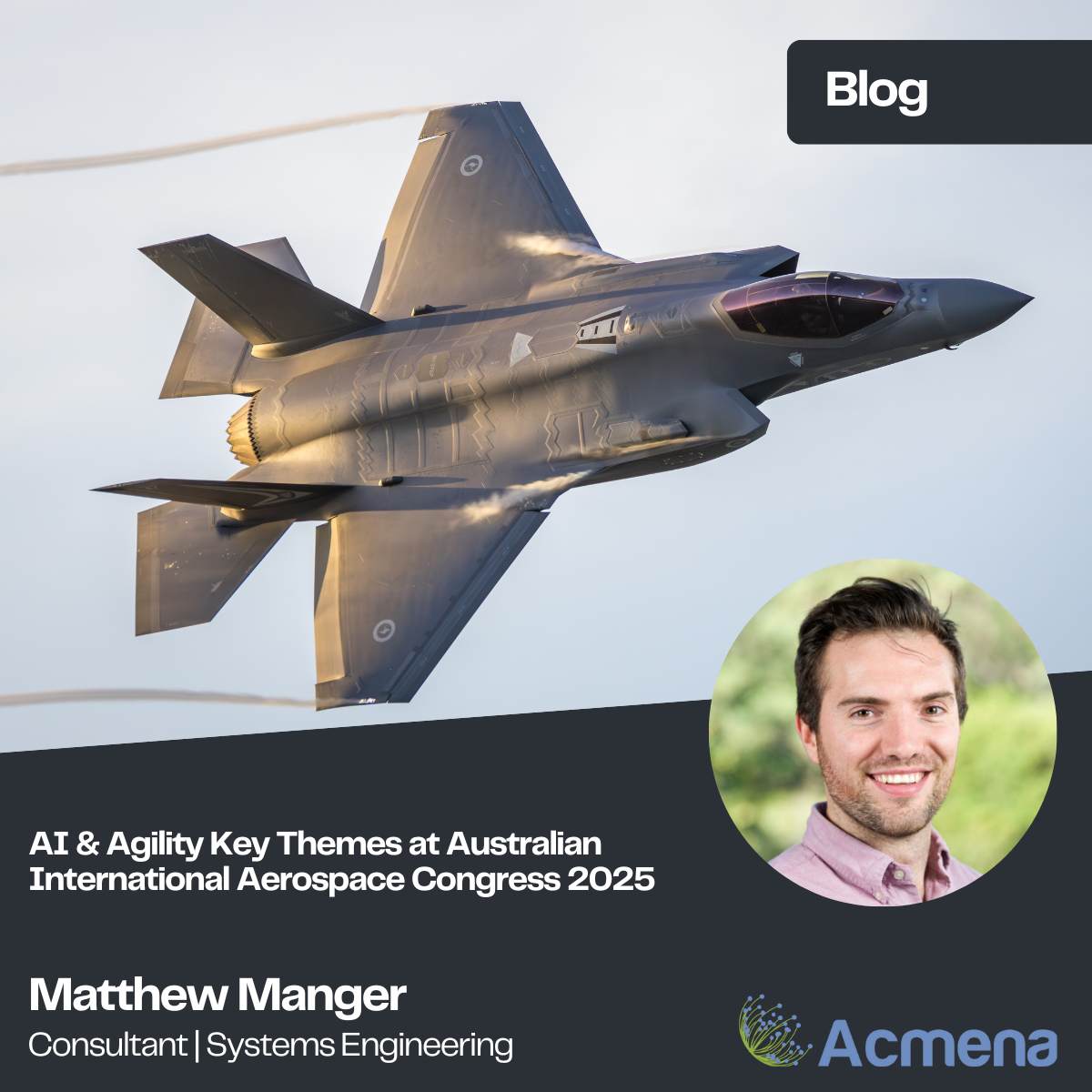Attending the 21st Australian International Aerospace Congress in Melbourne offered a valuable opportunity to discover the latest advancements in aerospace technologies and how innovations such as AI are informing systems engineering and safety practices.
One of the key themes was the growing need for agility within the aerospace sector due to increasing speed of technological advancement and change within the operational environment.
With rapid advancements in technology, particularly in defence, there was a strong emphasis on the importance of flexible design processes.
The advantages of utilising a systems engineering approach, in addition to using tools like Model-Based Systems Engineering (MBSE), were highlighted and demonstrated.
However, the necessity of remaining agile in a fast-paced innovation environment such as defence was emphasised to avoid systems becoming redundant.
It is evident that while engineering process documentation and management is key to a successful project, it must not stagnate the ability to adapt designs efficiently in response to evolving operational and functional requirements.
This topic was addressed in multiple presentations, but most notably by Amanda Holt from SYPAQ with her presentation on ‘Aerospace Innovation Out of the Box: from cardboard planes to harnessing data analytics and AI to drive rapid product development in a disrupted ’. As she illustrated, in any project the key resource is time and it is vital to frequently engage with all stakeholders to check if the operational requirements are still relevant or need to be updated.
Another area of discussion was around autonomy and AI, which are transforming aerospace operations. AI technologies such as advanced neural networks are increasingly being used for faster, more reliable decision-making in complex, high-stakes environments, such as UAV swarms and support vehicles.
In addition, Michael Scott from RMIT with his presentation on ‘Automated Aircraft Defect Risk Analysis Utilising Maintenance and Pilot Reports’ demonstrated the advantages of leveraging the AI and Language models to process vast amounts of data to speed up and improve result in defect identification and risk analysis. It was noted that while AI improves operational efficiency, human review and validation remains essential to add further assurance while the technology continues to mature.
Overall, the congress emphasised the importance of staying at the forefront of emerging technologies like AI while maintaining best engineering practices ensuring safety, efficiency, and reliability. I’m personally excited to see the innovation and adoption of AI in data and document analysis, streamlining processes, enhancing efficiency and ultimately saving the invaluable resource of ‘time’. This technology has the potential to benefit a wide range of industries.
Staff Profile: Matthew Manger | Systems Engineering Consultant
Related Content: Steering Transformation. The Role of AI and Large Language Models in Systems Engineering and Safety Assurance

